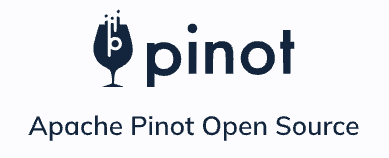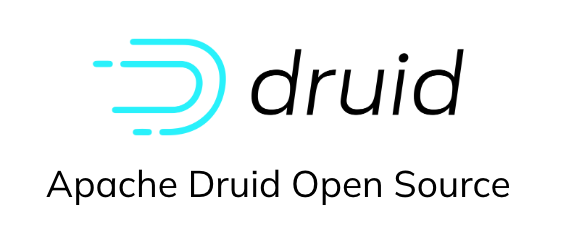Apache Pinot vs. Druid: Which Is the Best Real-Time OLAP Solution?
Real-time analytics, powered by Apache Pinot, provide superior results to Apache Druid
Users are increasingly turning to a new generation of databases designed for the demands of real-time Online Analytical Processing (OLAP). When it comes to Apache Pinot vs. Druid, which one is right for your use case?
6 Reasons to Choose Apache Pinot Over Druid
High Queries Per Second (QPS)
Unlock your data for internal & external users by supporting extremely high concurrency queries (100,000+ QPS).
Low-Latency Aggregations at Scale
Maintain performant aggregations against petabytes of data, with latencies measured in milliseconds.
Fast & Flexible Indexing
Leverage multiple indexing options, including the star-tree index for fast and efficient query results.
Support for Upserts
Query data within milliseconds of ingestion to ensure results are accurate and up to date.
Better Tiered Storage Solution
Get results in seconds, not minutes with tiered storage designed for fast analytics.
Query-Time Joins
Support distributed query-time JOINs across data with a multi-stage query engine.
Apache Pinot, Designed for User-Facing Analytics
Apache Pinot™, is a free open-source software (FOSS) database designed for real-time analytics. Apache Pinot is capable of supporting a high rate of queries per second (QPS) with low latencies — often as low as single digit millisecond or submillisecond results. Apache Pinot can perform fast ingestion and produce fresh results against massive datasets in the terabytes to petabytes scale.
While Apache Pinot and Apache Druid share many architectural similarities, it is in performance where their specific differences become immediately apparent. Apache Pinot can sustain thousands — even hundreds of thousands — of queries per second, allowing it to support user-facing analytics, where high concurrency of queries is a strict requirement. Apache Pinot supports this level of concurrency while exhibiting far lower query latencies for you to meet your strict Service Level Agreements (SLAs).
User-facing analytics is a special case of real-time analytics that requires ingesting streaming data, serving high concurrency QPS while maintaining low latencies (lower latencies are better). When comparing Apache Pinot vs. Druid, this is where Pinot excels. Traditional data warehouses were not designed for user-facing, real-time analytics; queries on data warehouses can take hours or even days to produce results.
Real User Stories
"Financial data is real-time in nature. [We use Apache Pinot to] empower our users with fast, accurate, and fresh data about their financial transactions."
Lakshmi Rao, Stripe
Stripe powers a number of user-facing interactions with Apache Pinot, including dashboards, billing analytics, Sigma reports, and developer analytics. They also use Pinot for internal use cases such as monitoring and alerting failure rates, financial reporting, monitoring risks, and tracking access logs. The team manages 8 Pinot clusters in production, the largest of which has 3 petabytes of data. Their Pinot clusters have a maximum QPS of 10,000 and run 120+ tables in production.

Get Fully-Managed Apache Pinot with StarTree Cloud
Schedule a Free Demo
Comparing Performance: Apache Pinot Wins Hands-Down
YouGov got results 5× - 7× as fast with Apache Pinot versus Apache Druid
Confluera found that Apache Pinot was 2× - 4× faster than Apache Druid
Zomato found Apache Pinot was 2× as fast as Apache Druid
Performance results and relative improvements for your particular use case will depend on many factors. Yet over and over users have cited that Apache Pinot can perform the same queries as Apache Druid in a fraction of the time.
Apache Pinot was created specifically to address the performance deficiencies found in Apache Druid. When given multiple queries to handle simultaneously Druid rapidly sees query responsiveness rise to 10 seconds or even more — making it unsuitable for many real-time use cases such as web or mobile applications that require blink-of-an-eye responsiveness for user bases measured in the millions of data consumers. Apache Pinot can provide latencies measured in milliseconds, even at 1000 QPS or more.
In this benchmark published by Confluera, Apache Druid often exhibited latencies as high as 2 to 4 seconds or more, whereas Apache Pinot ran the same queries in a single second. Even in cases where Apache Druid latencies were subsecond, Apache Pinot latencies were lower — at times up to an order of magnitude faster. (Lower results are better.)
YouGov tried various databases to meet their needs for fast analytics. This shows the clear advantage of using a real-time Online Analytical Processing (OLAP) database compared to traditional Online Transactional Processing (OTLP) databases like PostgreSQL (SQL) or Cassandra (NoSQL). Even amongst real-time OLAP databases Apache Pinot handily out-performed Apache Druid and Clickhouse. (Lower results are better.)
Advantages of Apache Pinot
Compare the features of Apache Pinot to Apache Druid and you’ll see that Apache Pinot offers far more flexible indexing and ingestion capabilities to perform real-time analytics. If you want a more in-depth feature comparison of Pinot vs. Druid (and Clickhouse), you can check out our blog on this:
|
|
 |
 |
|---|---|---|
|
SQL |
||
|
Query-Time JOINs |
||
|
Indexing Strategies |
||
|
Inverted Index |
||
|
Sorted Index |
||
|
Range Index |
||
|
JSON Index |
||
|
Geospatial Index |
||
|
Star-Tree Index |
||
|
Bloom Filter |
||
|
Text Index |
||
|
Timestamp Index |
||
|
Sparse Index |
Via StarTree Cloud |
|
|
Ingestion |
||
|
Upserts (Full-row and partial-row) |
||
|
Change Data Capture (CDC) |
||
|
Out-of-Order Handling |
||
|
Real-Time Deduplication |
||
|
Event Streaming Integration |
||
|
Apache Kafka |
|
|
|
Amazon Kinesis |
|
|
|
Apache Pulsar |
|
Via Kafka-on-Pulsar (KoP) |
|
Google PubSub |
|
|
|
Data Warehouse Connectors (Batch Ingestion) |
||
|
Snowflake |
Via StarTree Cloud |
|
|
Delta Lake |
Via StarTree Cloud |
|
|
Google BigQuery |
Via StarTree Cloud |
|
|
Object Store Support (Batch Ingestion) |
||
|
Amazon S3 |
|
|
|
Google Cloud Storage (GCS) |
|
|
|
Azure Data Lake Storage (ADLS) gen2 |
|
|
|
Hadoop Distributed File System (HDFS) |
|
|
|
Batch Ingestion File Formats |
||
|
Avro |
|
|
|
CSV |
|
|
|
FlattenSpec |
|
|
|
JSON |
|
|
|
ORC |
|
|
|
Parquet |
|
|
|
Protocol Buffers (Protobuf) |
|
|
|
Thrift |
|
|
|
TSV |
|
|
|
Data Analytics Integration |
||
|
Apache Spark |
|
|
|
Tiered Storage |
||
| Multi-volume tiering |
|
|
| Compute node separation |
Via multiple tenants |
|
| Cloud Object Storage* |
Via StarTree Cloud |
|
*Not All Tiered Storage is the Same
StarTree Cloud offers tiered storage in a way that far exceeds the performance of Elasticsearch. StarTree allows you to run your application’s fastest data on locally attached NVMe storage. Or you can also use block storage for greater resiliency. Plus you can use cost-effective distributed object stores such as Amazon S3, Google Cloud Storage, or Azure Data Lake Storage. Performance on these objects stores will be far faster than Elasticsearch’s “Frozen Tier,” which will produce query results in scales measured by minutes, not seconds.
Migrating from Apache Druid? We'd Love to Help
Start a free trial or meet with our experts. Discover how easy it is to get started migrating your workloads to Apache Pinot with StarTree Cloud.